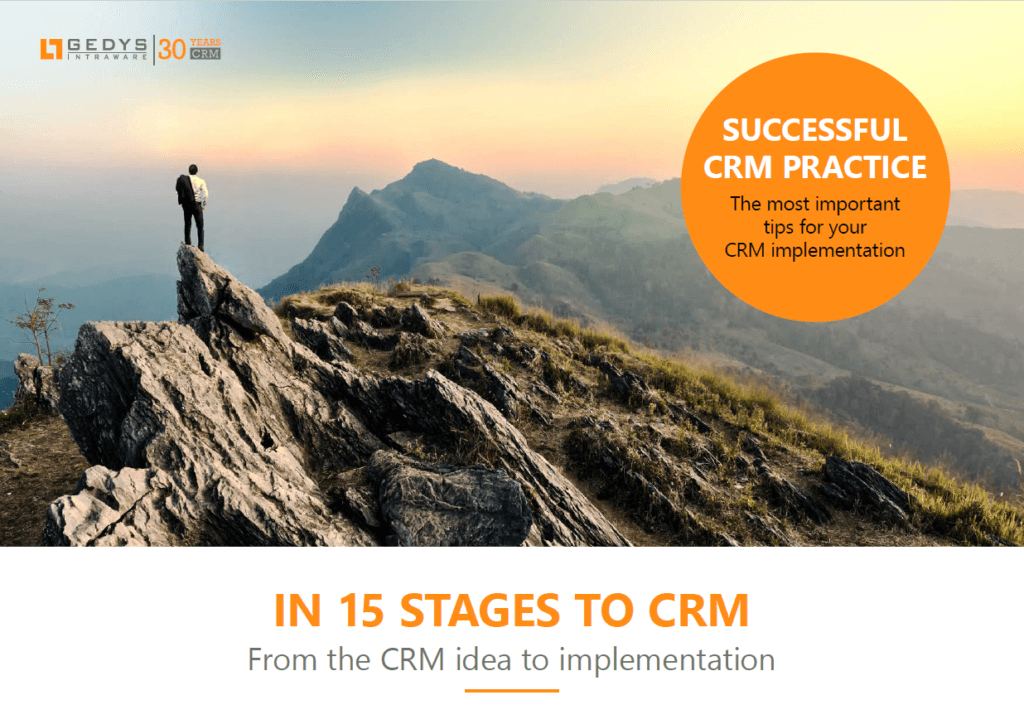What is Beyond Selling? Beyond Sales with CRM
What is Beyond Selling all about? And how does CRM contribute to the future of sales?
Sales tasks are becoming increasingly complex. For a long time now, it’s no longer just a matter of bringing your products to the man or woman. Increasing customer expectations, more complex networks at all levels of interaction and communication as well as the constantly new possibilities and transformations in the course of digitization require more than a great product or a low price to sell well. Fundamental rethinking, questioning the status quo and the courage to adopt new strategies in sales are required today. We are “beyond selling” – beyond sales. Find out what this means and how CRM can help you.
Table of Contents
Beyond Value Based Selling
Value-based sellinghas long been nothing new. This approach is no longer just about having a good product or offering it at a particularly tempting price, but about customer-benefit-oriented argumentsthat convince. The focus is therefore on increasing value for the customer. In order to be able to formulate added value explicitly, extensive knowledge of the customer, his company, his processes and plans is necessary. Only from this can a potential for value appreciation be derived and interwoven into the sales argumentation.
Now not only the structures and processes on the market and at your customers have become many times more complex in recent decades. Their company also had to and must continue to develop. This is where Beyond Selling comes in as a holistic sales philosophy with an integrative approach. On the basis of aspects of value-based selling as well as a ruthless examination of existing strategies, instruments and responsibilities, the basic prerequisites for a customer-centric, innovation-promoting and enthusiastic sales culture are created.
Beyond Selling
This holistic sales philosophy is about growing beyond traditional sales. In a tight network of customer needs, corporate management as well as corporate structures and processes, a basic attitude is to be implemented on the basis of which a flexible adaptation to changing environmental conditions is possible at any time. But how is such a basic attitude to be created?
The basis for this is first of all the radical analysis of the existing status quo, i.e. all key figures of recent years and the previous sales approach. Subsequently, gaps are identified and the sales concept is optimized in the sense of a customer-benefit-oriented approach. The focus is on the customer journey, customer perception, so-called trigger events and the (digital) customer experience.
Strengthening networking and redefining roles
A large part of such an optimization also has the interlocking of different departments of a company with the aim of a better understanding of customers. The link between sales and marketing sounds familiar, but the strict separation of office and field service and responsibilities as a whole should be reconsidered.
Today, the field service has the role of a sparring partner for the customer. In addition to extensive know-how on their own products and processes, sales should also know how to dovetail their knowledge with those of the customer. All with the aim of achieving optimal added value for the customer company. Sales itself thus becomes an integral part of customer processes. In addition, it is only with the experience gained from sales, product management and the collaboration of both departments with the development that really beneficial products can be designed.
In addition, in view of the variety of communication channels and interaction options, visiting customers has become a point of contact alongside many others on the entire customer journey. Therefore, it is necessary that all departments in the company deal with modern technologies in order to then implement the appropriate applications together. This makes it possible to offer comprehensive information on products and processes as well as various contact options in the right places.
Beyond CRM
While the advancement of digitized business models and new technologies is the fuel for changes in market conditions and customer expectations, at the same time changed customer expectations and markets are drivers for the development of new or the adaptation of existing technologies. Real-time data, segmentation, personalization – the requirements for CRM systems have also changed. It’s no longer just about managing customer data and email histories.
Rather, a CRM system is at your side as a linchpin for the tasks described above. The contact points to the customer as well as the relevant customer data have become so much more extensive in times of social media and tracking that a tool is needed for meaningful insights that provides transparent information at all times.
In many companies, tons of small island tools exist over time. However, this not only consumes time and resources, but also brings with it islands of data. Modern CRM systems make it possible to integrate a variety of tools by means of interfaces and integrations. Not only does all interesting data collect in a poolfrom which it can be evaluated across the board. They also allow you to access a wide variety of tools from a central point. In addition to the holistic view of corporate key figures, this also promotes exchange and collaboration between employees and departments as well as between field service and customers.

